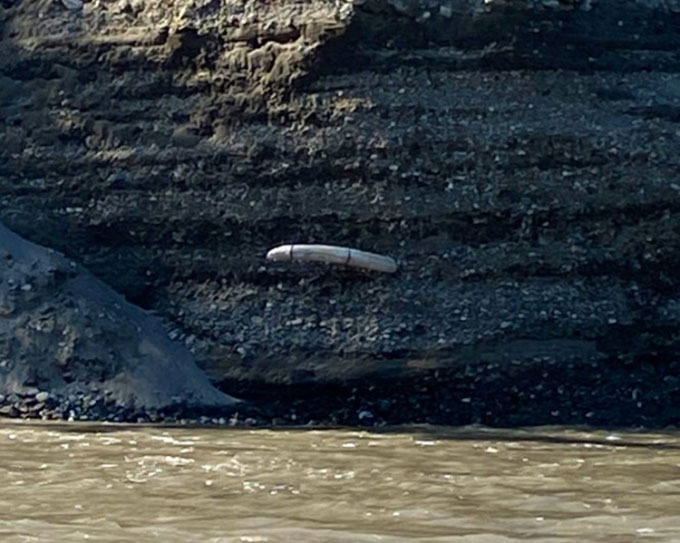Woolly Mammoth Tusks: An Extinct Species from 3,600 Years Ago Found in a Precarious Position, Wrapped in Rope to Prevent Falling into the Water.
Adrienne Ghaly, a researcher at the University of Virginia, attracted attention on Twitter by sharing a photo of a large woolly mammoth tusk protruding from the Koyukuk River bank near Coldfoot, Alaska, on June 7. The post garnered nearly 6,000 likes and 800 shares.

The woolly mammoth tusk protruding from the Koyukuk River bank, Alaska. (Photo: Adrienne Ghaly).
The tusk emerges from sedimentary layers dating back to the Holocene or Pleistocene epoch (which lasted from 2.58 million to 11,700 years ago). Experts discovered the tusk a few years ago, and the University of Alaska Fairbanks is responsible for monitoring it. Upon closer inspection, viewers can see ropes wrapped around the tusk to prevent it from falling into the river below.
Alaska is a treasure trove of tusks and other remnants of the woolly mammoth (Mammuthus primigenius). This species is believed to have gone extinct about 3,600 years ago and is a descendant of the steppe mammoth. The steppe mammoth crossed the land bridge connecting present-day Russia to Alaska approximately 100,000 years ago.
The tusk at the Koyukuk River has attracted attention due to its precarious position. However, many other specimens have also been found in melting ice, sometimes scattered around the area.
Woolly mammoth tusks grow in layers, providing scientists with unique insights into their lives through the analysis of each individual layer. Late last year, through the analysis of a split tusk, researchers inferred that the mammoth had undertaken an incredible journey of 80,000 kilometers across Alaska approximately 17,000 years ago.
In Alaska, the possession of woolly mammoth tusks, their crafting into jewelry, and even their transport through customs are legal, as long as the landowner agrees when removing them from private property. However, taking tusks from state or federal land is prohibited. Woolly mammoth tusks can be purchased by local jewelry stores for about $35 to $70 per pound (1 pound is equivalent to 0.45 kg).


















































